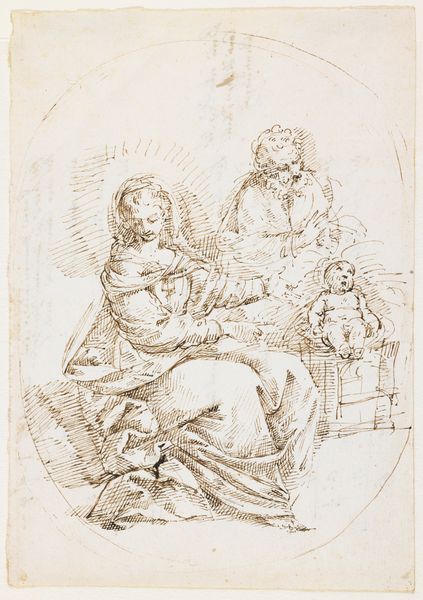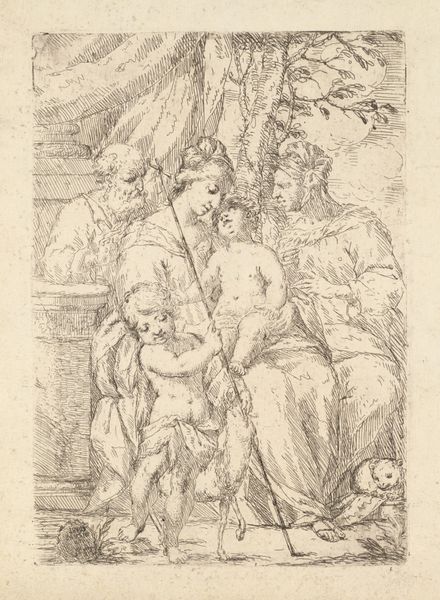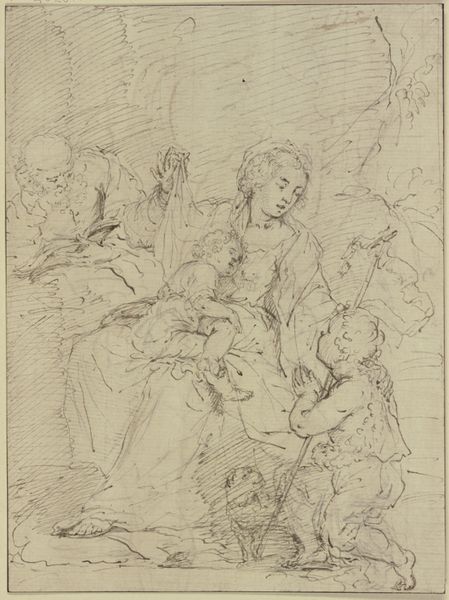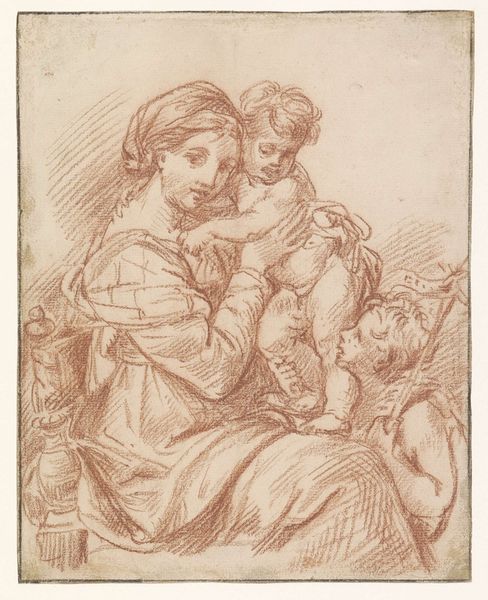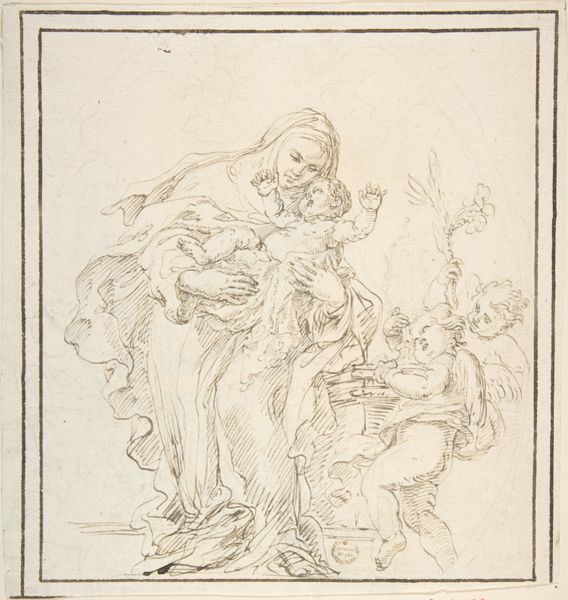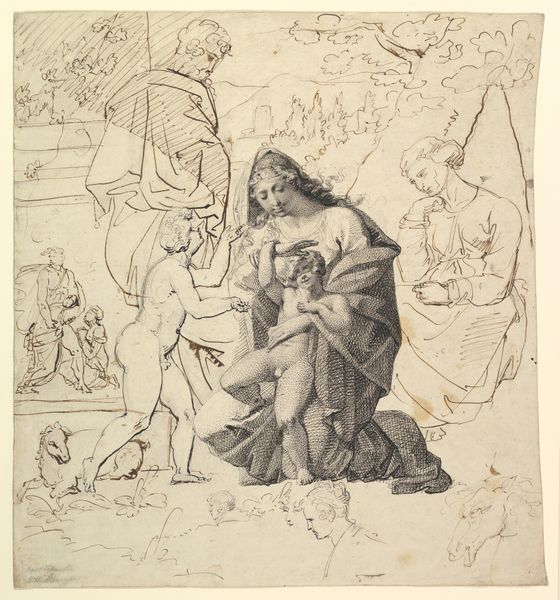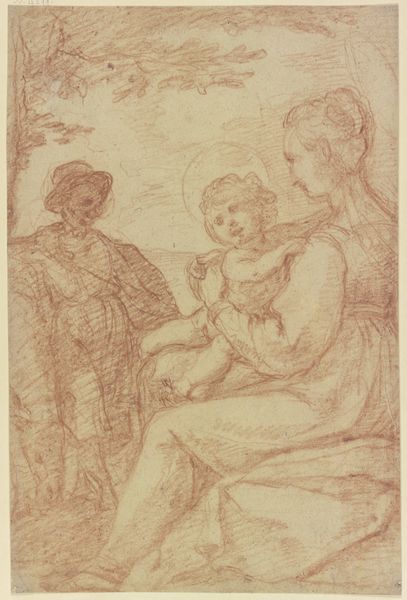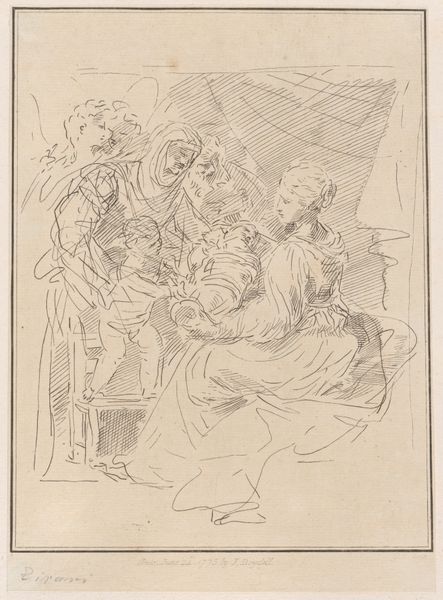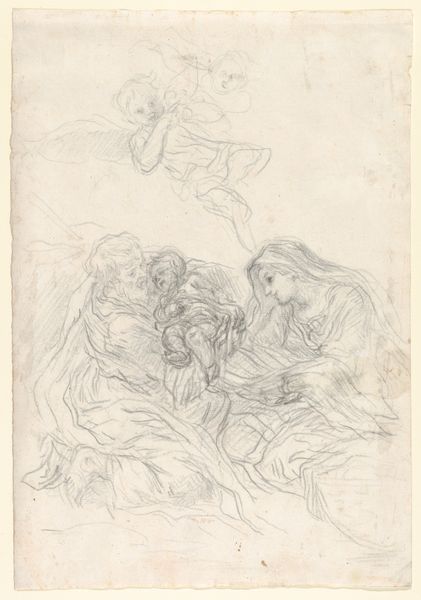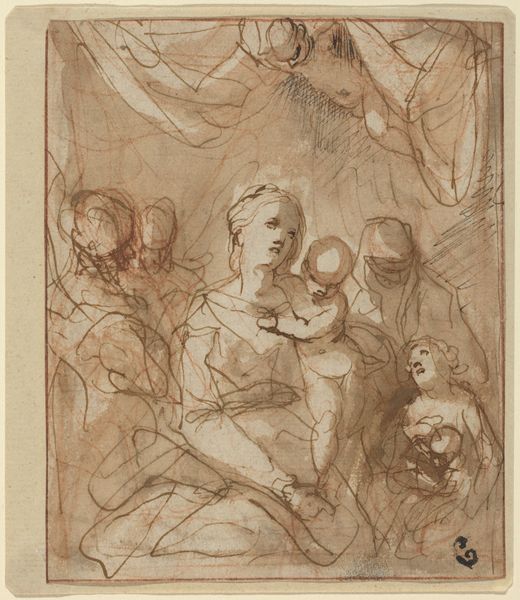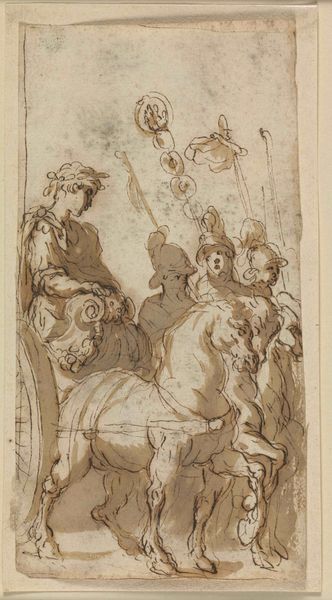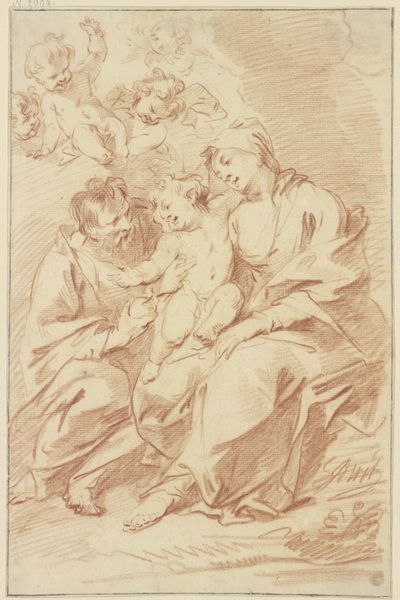
drawing, ink, pen
#
portrait
#
drawing
#
ink drawing
#
pen sketch
#
figuration
#
ink
#
pen
#
italian-renaissance
Dimensions: overall (approximate): 19.6 x 17.1 cm (7 11/16 x 6 3/4 in.)
Copyright: National Gallery of Art: CC0 1.0
Curator: Let’s examine this pen and ink drawing entitled "Holy Family with Saint Anne and Female Head in Profile". It’s an intriguing composition. Editor: Intriguing, indeed. My initial impression is one of tender melancholy. The figures are grouped intimately, but there's a distinct pensiveness, a shadow of foreboding. Curator: Observe the artist's masterful use of line. The cross-hatching creates depth and volume. The penstrokes delineate the figures while allowing the light to breathe. Consider how this lends itself to the creation of hierarchy. Editor: But consider too the social positionality embedded here. The female figures, rendered with such fine strokes, are relegated to a supporting role, framed entirely by their relationship to the Christ child. Saint Anne and this other woman serve as a backdrop, their own narratives subjugated to the patriarchal narrative of the Holy Family. Curator: From a formal perspective, this serves the symbolic intention. It directs the viewer's eye toward the primary subject: the Holy Family. The composition's deliberate asymmetry introduces a dynamic tension. The figure on the right, for example, feels deliberately cropped, adding to the sense of unease. Editor: Yes, there is an asymmetry which could perhaps be interpreted to further highlight the traditional roles and limited agency afforded to women within the context of religious structures. Who holds the power in this family? It's materially, undeniably, with the male figures. Curator: Yet it is within those very structures that these women find meaning and purpose, a form of power that they are then able to express in their family life. One can interpret the softness in the faces to represent that inner emotional complexity. Editor: While not explicitly a critique, these representations reflect the limited possibilities for women. We can analyze this representation as one way the patriarchy imposes itself. This can serve as a window for reflection on women today and if society has escaped this outdated tradition of gender roles in families. Curator: It's a testament to the power of visual language. Thank you for lending your thoughts, and bringing light to new ideas. Editor: And thank you for leading the way with observations that let us all come closer to grasping our roles and understanding this moving drawing and the place women take within it.
Comments
No comments
Be the first to comment and join the conversation on the ultimate creative platform.
